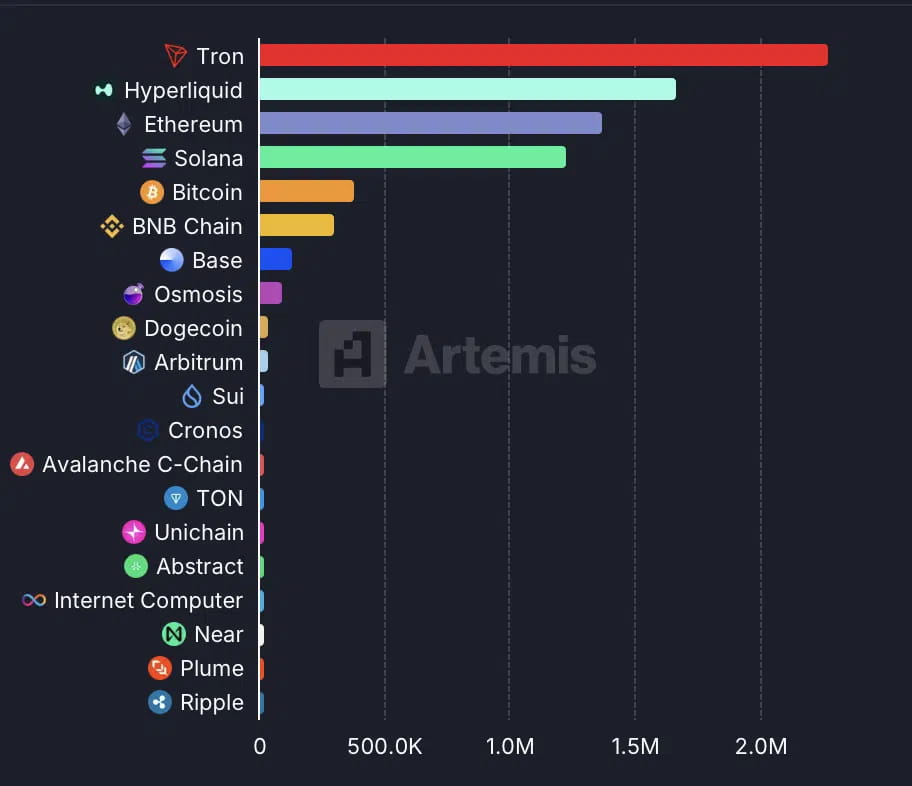If the crypto world were judged by one of the most commonly used criteria in the stock market – that is, by its ability to generate revenue for networks – we would have a very different ranking than that based on market capitalization.
Because the ranking of fees – the fees collected by networks – tells us at least two things: the first concerns the sectors that actually generate volumes in the crypto world. The second concerns the networks that successfully host such sectors.
The ranking of fees: some surprises for newcomers
On one side, there are narratives, and on the other, there are numbers, which everyone likes because they tell many stories, often dependent on who tells them. Here we will try to clarify a bit, neutrally expressing the data returned to us by the chains and the... fees.

The chart is clear: it refers to the last 24 hours but actually captures a bit of the trend of recent times, when there are few volumes on the more reputable chains.
Tron surprises – although only those who do not closely follow the developments in the crypto world would be surprised. It collects a significant amount of fees, primarily related, as we will see, to the stablecoin sector. It is Tether, with its USD, that commands the majority of the usage of this chain.
A relative surprise in second place, where we find Hyperliquid, which Alessandro Adami has already covered with a recent special here. The decentralized derivatives (and spot) exchange is experiencing a magical moment and accounts for about 35% of the collected fees, as also noted by Matthew Sigel of VanEck in a recent post on X.

In third place is Ethereum, which, however, along with other reputable chains, is experiencing a period of relative stagnation in terms of collected fees, a consequence of transaction volumes from a bear market.
In fourth place is Solana, which confirms itself as the only one capable of challenging the top of the crypto sector, at least in terms of relevance and usage. It would be unfair to continue to speak of surprise. The crypto market has now taken shape, and Solana is undoubtedly to be considered a solid player in this sector.
Bitcoin, which will be a surprise for many of our readers, is only in fifth place. This is also a signal that in recent days, weeks, and months, the trend has been primarily driven by ETFs and traditional finance. For many, this is the death of Bitcoin (which is not just an investment asset but also a free monetary system). Later, history will be responsible for confirming or denying the trend.
Stablecoins and free exchanges
Dominating the sector and generating fees, which are then revenues and one of the most interesting metrics for judging how healthy the crypto world is, are two sectors.
The first is that of stablecoins – with Tether USDT and USDC confirming themselves as two of the best protocols ever created, grown, and developed in the blockchain space.
The second is that of (relatively) decentralized derivatives. Hyperliquid is experiencing a great moment, which is also reflected in the collected fees and could confirm in the future as one of the most prosperous.
For now, the other sectors are lagging behind – and by a lot. This confirms that the crypto and blockchain world has so far found its strongest use case in the investment and payments sector.


